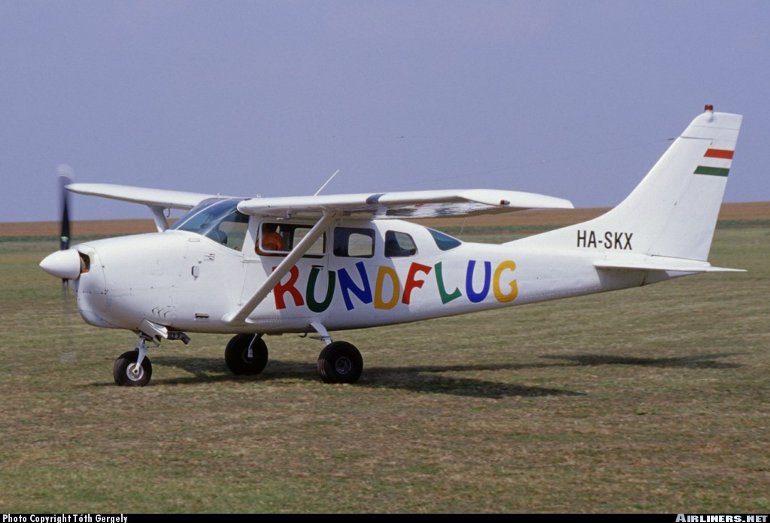Aircraft Technical Data
Cessna 205, 206 & 207

| Details | |
| Country of Origin | United States of America |
| Type | Six seat utility light aircraft |
| History | The popular 205/206/207 line began life as a four seat utility aircraft, stretched from the 182 Skylane. In its initial form the 205 (originally 210-5) was essentially a fixed undercarriage derivative of the 210 Centurion, optimised for utility roles, giving more baggage space. Introduced to the Cessna lineup in 1962, the 205 was powered by the same IO-470 engine as the 210B and featured an additional small cargo door on the left side of the fuselage. It later gained it's 6th seat. The 205 lasted in production until 1964 when it was replaced by the more powerful 206, which came in 2 options, the P206 Super Skylane and the U206 Super Skywagon, which respectively meant Passenger and Utility, the U206 featuring larger double cargo doors on the right fuselage side. Continuous improvement followed, including introduction of turbocharged and fuel injected models. The 'Super' prefix for the Super Skywagon was dropped in 1969 and the Stationair name was adopted in 1971. Production originally ceased in 1985. The 207 Skywagon meanwhile featured a 1.07m (3ft 6in) fuselage stretch (allowing seating for seven) and became available from 1969. Known as the Stationair 7 from 1978, it was replaced by the 207A Stationair 8 from 1979 which had seating for an eighth occupant. Production ended in 1984. A few were built in France by Reims as the F207. Several 206 and 207 aircraft have been converted to turbine power by Soloy as the Turbine 206 and 207. The 206 is the third Cessna single to be returned to production at the company's new Independence plant in Kansas. Two versions are offered, the normally aspirated 206H and turbo T206H. The T206H first flew on August 6 1996, powered by a TIO-580, while the normally aspirated 206H, powered by an IO-580, followed on November 6. A decision to switch to the TIO-540 and IO-540 because of reliability concerns pushed back production by about 10 months. The 206H was certificated on September 9 1998, the T206H on October 1. |
| Powerplants | 207A - One 225kW (300hp) Continental IO-520-F fuel injected flat six driving a three blade c/s McCauley prop. 206H - One 224kW (300hp) Textron Lycoming IO-540-AC1A driving a three blade c/s prop. T206H - One 231kW (310hp) turbocharged TIO-540-AJ1A. |
| Performance | 207A - Max speed 278km/h (150kt), max cruising speed 266km/h (144kt), long range cruising speed 220km/h (118kt). Initial rate of climb 810ft/min. Service ceiling 13,300ft. Range with standard fuel and reserves 870km (470nm), with optional fuel and reserves 1280km (690nm). 206H - Max speed 278km/h (150kt), cruising speed at 75% power at 6500ft 143kt (265km/h). Initial rate of climb 920ft/min. Service ceiling 16,000ft. Takeoff distance 275m (900ft). T206H - Max speed 315km/h (170kt), cruising speed at 75% at 20,000ft 306km/h (165kt). Initial rate of climb 1010ft/min. Service ceiling 27,000ft. Takeoff distance 255m (835ft). |
| Weights | 207A - Empty 951kg (2095lb), max takeoff 1639kg (3612lb). 206H - Empty 974kg (2146lb), max ramp 1640kg (3614lb). T206H - Empty 1011kg (2227lb), max ramp 1641kg (3616lb) |
| Dimensions | 206H & T206H - Wing span 10.92m (35ft 10in), length 8.62m (28ft 3in), height 2.92m (9ft 7in). Wing area 16.2m2 (174sq ft). 207A - Same as 206 except length 9.68m (32ft 9in). |
| Capacity | 205 & 206 seat six, 207 seats seven or eight. |
| Production | 574 205s, 7556 206s and 790 207s were built through to 1984. 206H & T206H deliveries began in late 1998. |
| Related Links | Cessna 205, 206 & 207 |
The backbone of this section is from the The International Directory of Civil Aircraft by Gerard Frawley and used with permission. To get your own copy of the book click here. |
|








